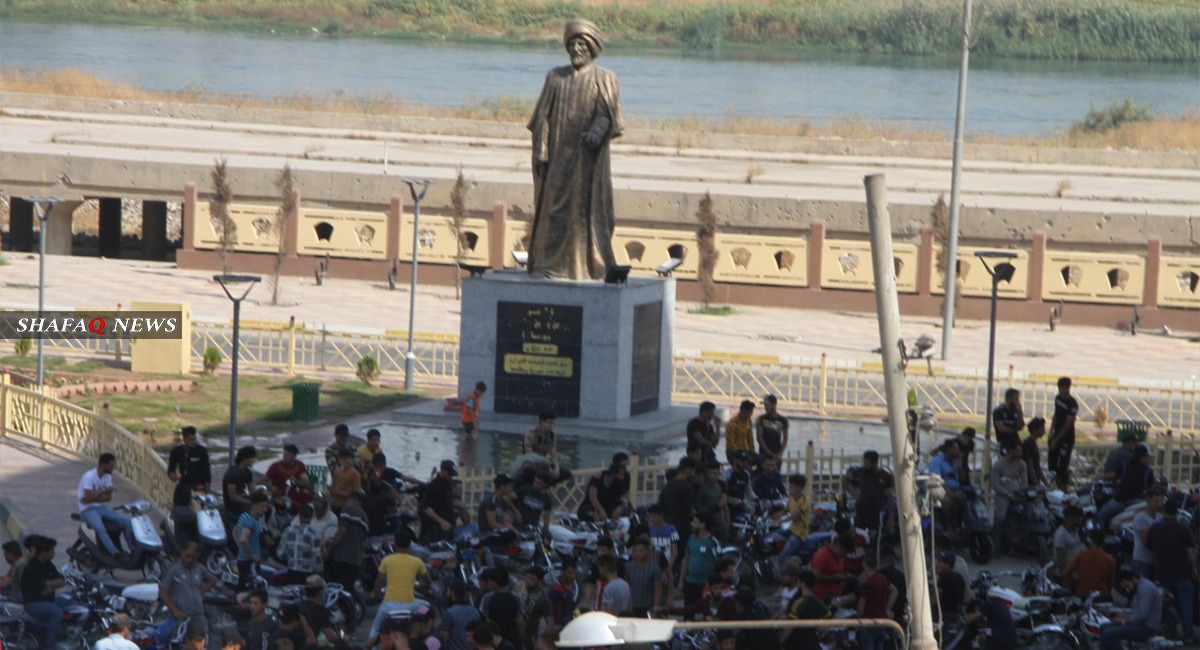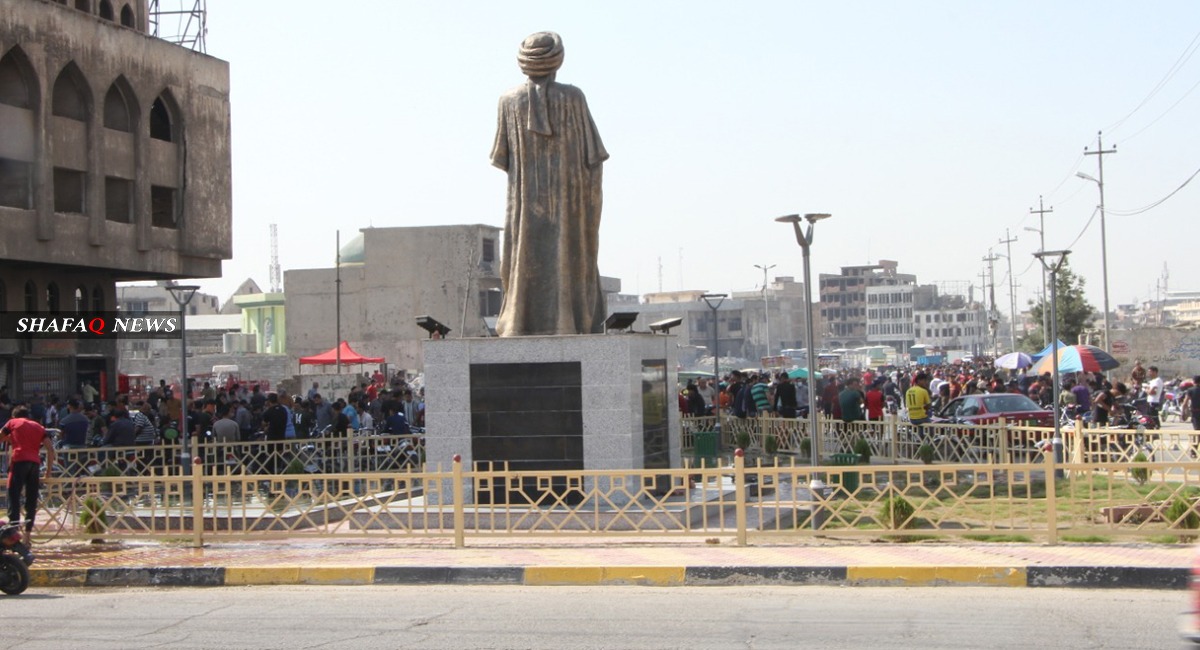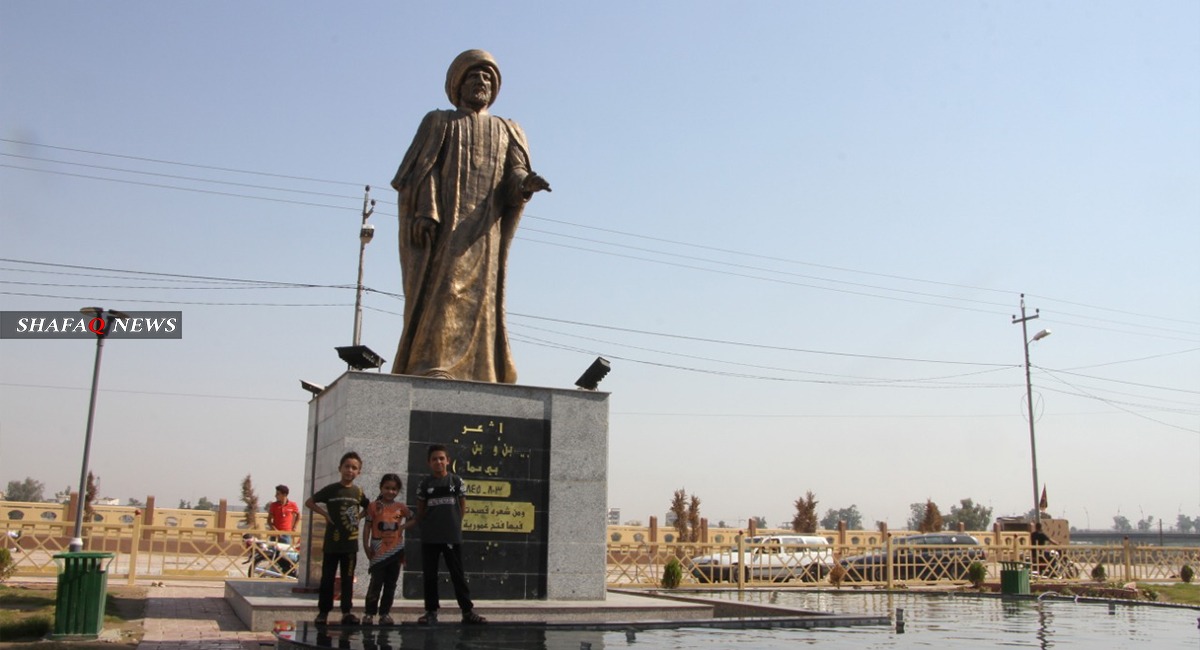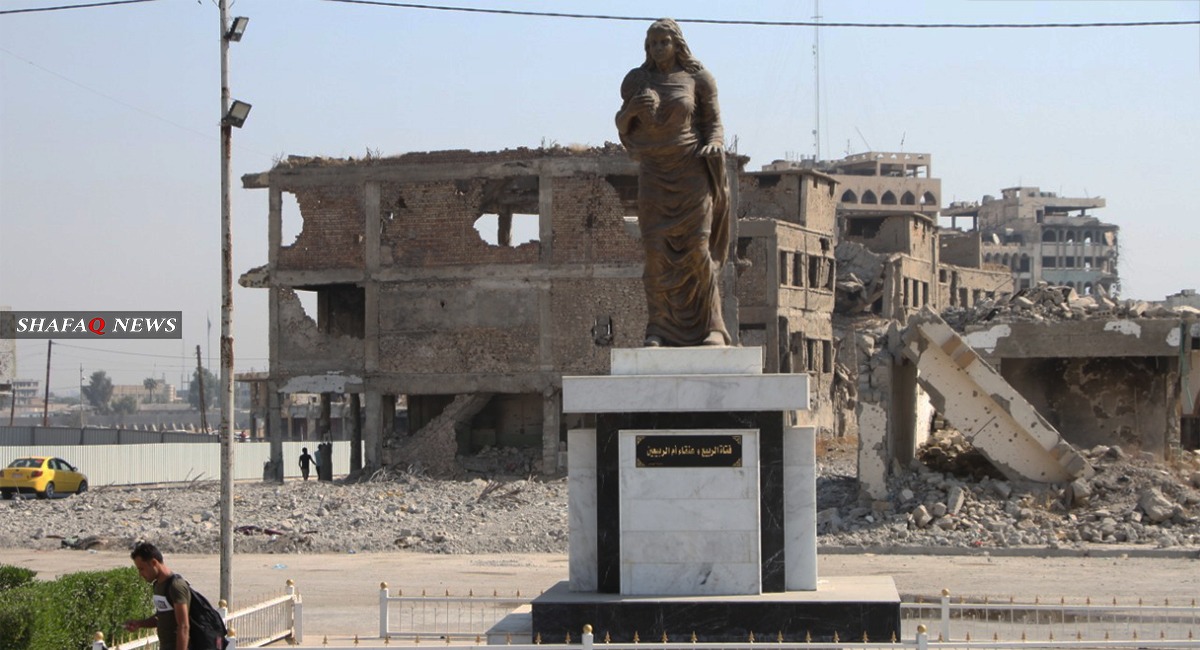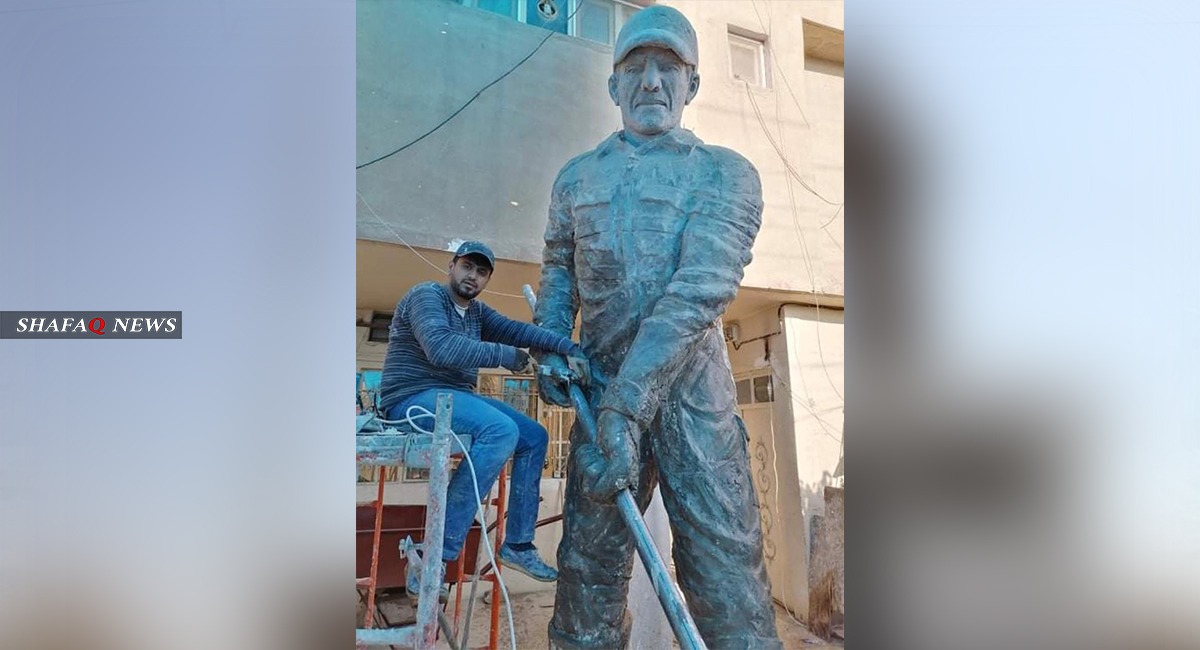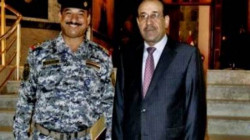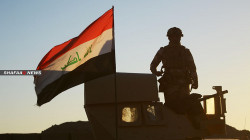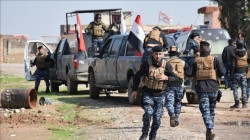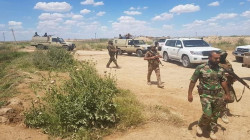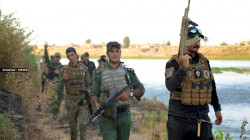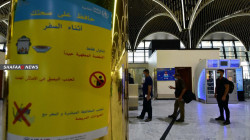The life is back to Mosul’s statues
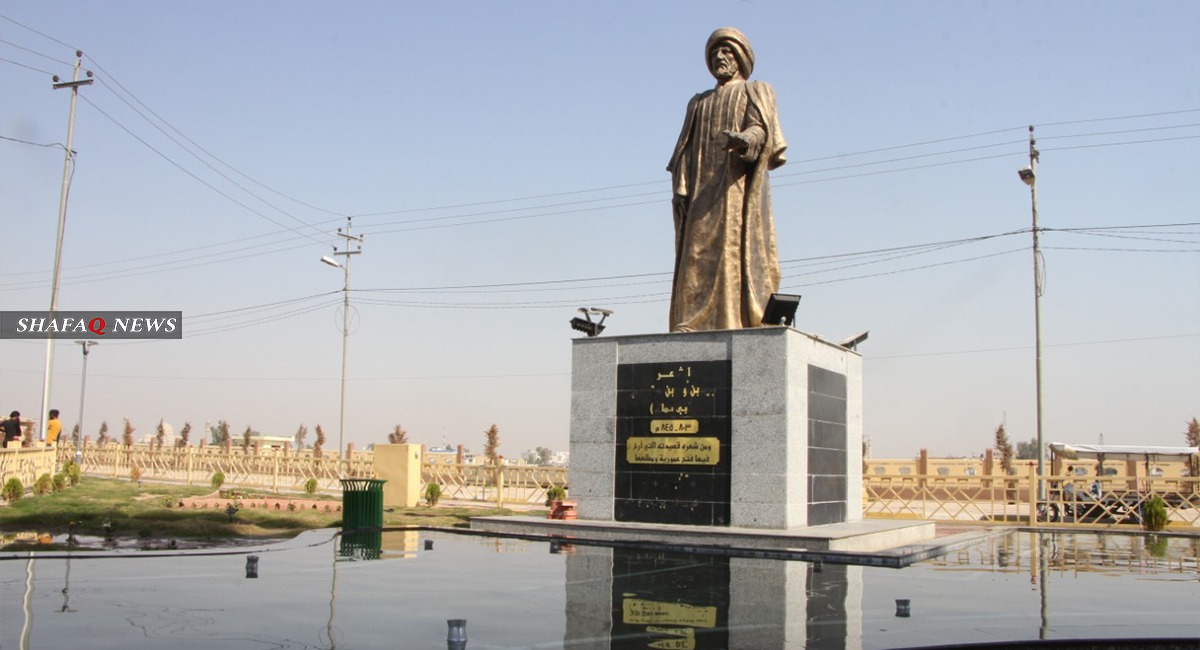
Shafaq News/ Symbolically, Mosul reaffirmed its victory over terrorism, as the famous statues that marked it once took place again in the city’s squares, reflecting the city's attachment to life -like any authentic city.
It is not easy to escape from the physical and psychological devastation effects inflicted by ISIS -between 2014 and 2017, but by returning its distinctive statues, Mosul, known for its rich history and ethnic as well as cultural diversity, says it is fighting to survive.
Amid destruction in Bab Al-Tob square in the center of Mosul, the city municipality re-erected four statues, including the “spring girl” –also known as “Um Al-Rabi’ain’s Phoenix”- statue that symbolizes Mosul’s unique spring, after years of absence from the square -after ISIS destroyed it, alongside many statues that existed in the city under the pretext that they are heathens’ idols.
Mosul fell to ISIS in 2014, and its terrorists killed, vandalized, and suppressed as they turned it into the "capital" of their so-called state; the squares where the famous statues were erected turned into executions, torture, and flogging’s squares, etching painful memories in Mosul’s people’s minds before the city was liberated in 2017. Therefore, the return of the statues sends a message of many meanings of life for them.
Not far from the Phoenix statue, the statue of Abu Tammam (one of the most prominent Arab poets who lived the last stages of his life in Mosul) returned to the Corniche Street and once again overlooked the river’s west bank. With the Abu Tammam statue’s return, the city's first markets in that street, as well as the commercial movement, were revitalized.
In addition to the "Spring Girl” and "Abu Tammam" statues, the statue of “Uthman Al-Mawsili” was back to Mosul’s squares; the iconic representation of Mosul’s artistic part and its Muashahat (poetry of Al-Andalus), and the "Al-Sawas Statue" that reflects Mosul and its people’s fame in making the licorice syrup –the famous beverage sold even to the neighboring provinces.
Those are not just sculptures. These statues represent part of Mosul’s history and an important aspect of its identity, so their return to the squares has spread a lot of vitality and optimism to the city’s people that the bloody page of ISIS has completely been folded.
Who made these statues?
Two sculptors from Mosul, Omar Al-Khafaf and Khalid Al-Abadi, graduates of the Faculty of Fine Arts, were behind the manufacture of all these statues, "Khalid and I are like one hand at work, we share all the difficulties and problems to bring these statues back to the city, as well as make new ones", Omar Al-Khafaf said in an exclusive interview with Shafaq News agency.
Omar said, “The return of these statues -which had been destroyed by terrorism, was a message of reassurance to Mosul’s people that life had returned, the identity of their city had not been erased, and the power of terrorism had been broken forever. If terrorism had a place in the city so far, we would not have been able to re-carve these statues".
Concerning wages, Omar said that the last thing they thought about was the financial returns, and all they were troubled with was collaborating with the city's municipality to return the statues. The municipal administration appreciated our position in waiving a large percentage of wages because its allocations were not enough, but insisting on the return of these statues produced results.
As for where their works of art are carried out, Omar said that they are carving statues in his courtyard to reduce costs, pointing out that all these sculptures came out of here -referring to the courtyard of his house.
Omar also talked about his dream -which has been fulfilled, as he said he was walking the streets when ISIS took control of the city, looking at the places of the destroyed statues and thinking, "I will rebuild it one day”, and the dream did come true.
First sculpted statue after Mosul’s liberation
Omar said that the first statue he made was that of Lieutenant General Abdul Wahab Al-Saadi, and it was supposed to be unveiled on the left side of the city in response to this man's positions with Mosul during the liberation operations, but political reasons prevented this.
As for the last statue Omar is working on, it is a statue of Youssef Dhanoon, one of the senior calligraphers in the Middle East, and said that his statue will be erected in a few days near the city’s museum.
As for Omar and Khalid's dream and the achievement they are looking for.. It is to do a global work of art that belongs to Mosul -in the field of peace specifically, to reflect the real picture of this city and its people, contrary to what was seen as a city of terrorism.
